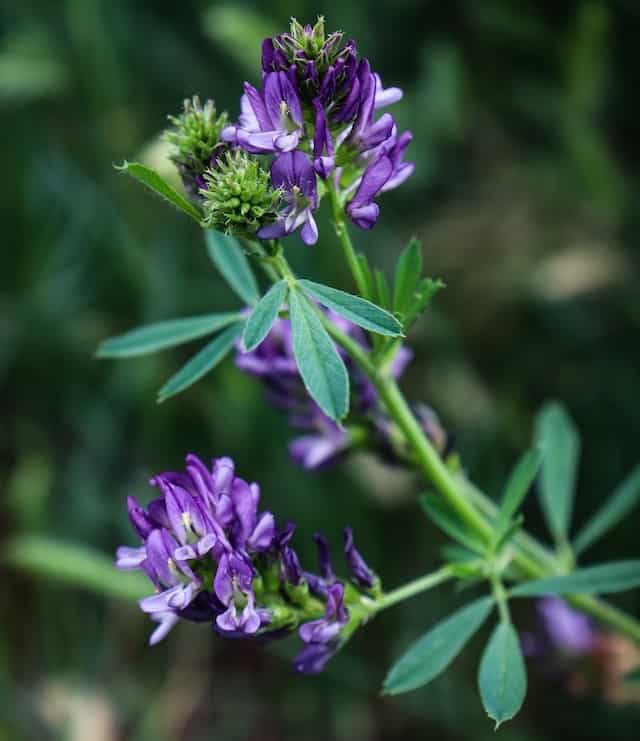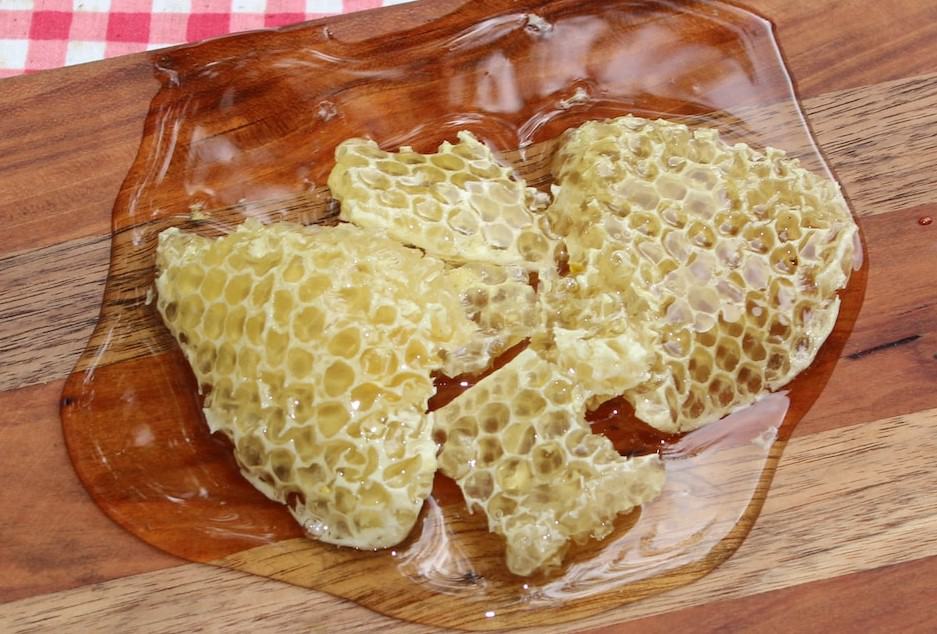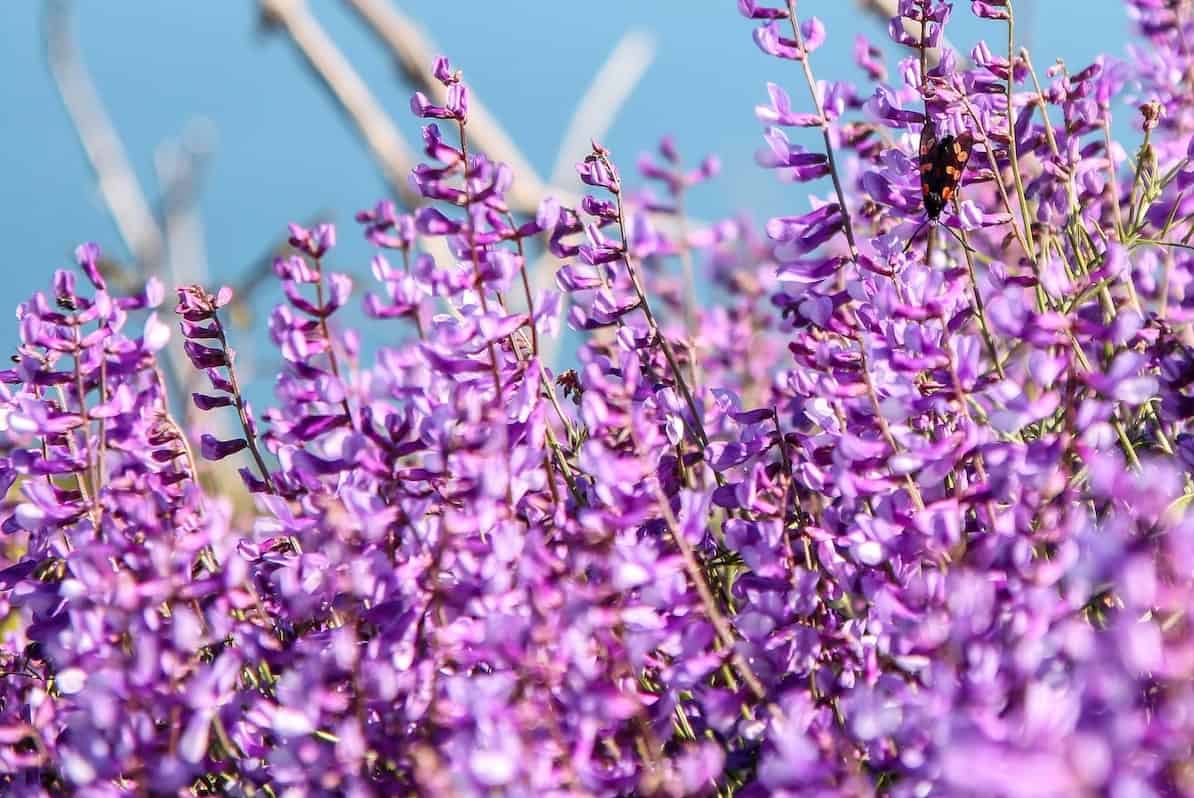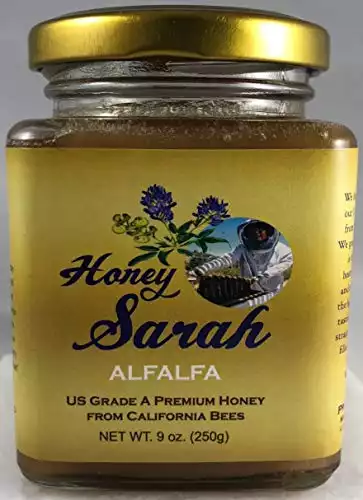Alfalfa is grown primarily in the United States as an agricultural crop and a high-quality feed for livestock. It provides food for most who love alfalfa sprouts. However, there is more to this plant than these. Many may not have known yet that alfalfa is also one exquisite honey varietal.
Yes, you heard that right! Alfalfa honey is quite remarkable!
But where does it come from?
|
$66.64 ($4.16 / Fl Oz)
|
$19.99 ($2.22 / Ounce)
|
The Alfalfa Plants
Related to beans and peas, alfalfa is a perennial plant from the legume family. Grown primarily as a food source for farm animals, it has been tagged as the world’s most important forage crop.
Alfalfa can also be utilized for human consumption in the form of its seed sprouts and honey. The sprouts are nutritiously ample sources of calcium, iron, magnesium, phosphorus, potassium, and zinc. It also contains vitamins B1, B2, B3, and B5, C, D2, and D3, K, plus carotenoid antioxidants and chlorophyll.
These plants thrive in agricultural regions in the northern and western parts of the United States. One can see them in California, Idaho, Montana, Utah, Oregon, Nevada, and Wyoming.

How Honey Bees Collect Alfalfa Nectar
Honeybees can pollinate while collecting nectar and pollen from the flowers of the alfalfa plants.
Being a vital food source for both humans and honey bees, farmers work hand in hand with beekeepers. This ensures the success of both the agricultural and beekeeping industries.
Alfalfa honey is less common than other varieties because of certain factors exclusive to this plant.
The Unique Flower of the Alfalfa Plant
The best alfalfa flower for honeybees is one that blossoms longer. This leads to more nectar for the bees to gather and turn into honey.
However, many alfalfas are cut at the first sign of budding to feed farm animals.
Also, an Alfafa flower is more difficult for a bee to pollinate. The structure of its blossom hides the nectar and pollen. To access these, the bee must press its head against the petals until the flower’s reproductive parts are exposed.
In most cases, bees don’t trigger the flower’s tripping mechanism. As a result, they also don’t get to pollinate the alfalfa. Estimates put it that honeybees only trip 10% of the alfalfa’s keel. This has also been a dilemma for farmers who need the plants pollinated for fertile seed production.

Farmers and Beekeepers Work Together
This prompted farmers in the alfalfa seed production business and beekeepers to deploy hives of leafcutter bees in the area.
These bees can trip roughly 80% of the keels. They go in, trip the keel to release the pollen, and expose the nectar. Then, the honey bees harvest the nectar and pollen of the already-tripped blossom.
Luckily enough, this method has allowed farmers to not only pollinate their alfalfa flowers essential to gather enough alfalfa seeds but for beekeepers to produce honey as well.
What Is Alfalfa Honey?
Taking into consideration how bees gather nectars, every honey bee spends more time with each alfalfa plant. Because of this, a honey bee ends up collecting less of the nectar and pollen that eventually becomes honey.
Qualities of Alfalfa Honey
In particular, alfalfa honey

But what does alfalfa honey taste like?
Alfalfa honey is mild in taste with hints of mint and vanilla. It imparts a slightly bitter, rich flavor, which contrasts well with this honey’s inherent sweetness.
When unprocessed and unfiltered, it may retain a barely perceptible floral aroma. Some would have faint grassy, herbal, or spicy flavors and beeswax notes.
It solidifies quickly and forms crystals. Even at room temperature and moisture-free, It easily turns slightly beige and opaque. This occurs due to its relatively high quantity of glucose compared to its fructose content. No need to worry, though, because this crystallization process does not spoil the honey.
Its Uses
Among other honeys, alfalfa is a preferred choice for cooking and baking. Its mild flavor does not overpower other flavors.
This makes it a favorite ingredient in recipes as a sugar substitute. Its mild sweetness makes it a perfect addition to a vinaigrette, salad dressings, marinades, and homemade sauces.
Some honey enthusiasts prefer consuming this honey straight out of the jar. However, it also works well with tea, lemonade, yogurt, and milkshakes, among others. Drizzle it over strong cheeses for a healthy, sweet treat.
As a sweetener for coffee and other beverages, it provides a bit of an earthy flavor as well. For pairing suggestions, it can be the best accompaniment to your morning whole wheat toast, muffins, pancakes, or waffles.
For a unique menu, dip fry some tofu or chicken and dip in mustard and alfalfa honey mixture. Or, add it to a spicy barbecue mix for a sweet, honey glaze.
Health Benefits of Alfalfa Honey

Raw honey contains bee pollen, which is responsible for the majority of alfalfa honey’s impressive health benefits. This varietal’s unique composition is rich in organic enzymes, vitamins, minerals, carbohydrates, amino acids, and other elements. All of these provide an energy boost when consumed.
Its numerous antioxidant properties are effective in fighting oxidative stress and damage done by free radicals. Oxidative stress interferes with regular cell functions and causes inflammation that may develop into chronic diseases.
Among other honey types, alfalfa honey generously contains acidic hydrogen peroxide, an enemy of many bacteria. As an antiseptic, raw honey from alfalfa has a low moisture concentration. Hence, history tells of this honey’s use as a topical treatment for wounds because of its antibacterial power.
Many people add this honey to herbal tea or on its own to prevent colds, flu, and respiratory tract infections. Its density and composition form a protective layer over inflamed mucous membranes, allowing them to regenerate and heal. It is an effective organic cough relief solution good for soothing throat irritation.
With prebiotic powers, Alfalfa honey can help alleviate an irritated stomach lining. It may be effective in alleviating gastritis and stomach ulcers. Additionally, it nourishes good bacteria in our digestive tract, improving digestion and promoting gut health.
Due to its diuretic and detoxifying action, alfalfa honey supports bodily functions in cleansing the body of toxins. As a good alternative to refined sugar, alfalfa honey assists in preventing hypoglycemia and improving appetite.
Best Alfalfa Honey
Curious to try Alfalfa Honey? Here are three options available on Amazon.com.
Alfalfa Honey vs. Clover Honey
Having tasted both honey varieties, alfalfa honey is comparable to clover honey. Similar in some ways, both honeys are mild in taste, smooth in texture, and offer plenty of health benefits. However, that’s as far as their similarities go.
For one, alfalfa honey is less sweet. Thus, it is more suitable for cooking and baking than for eating straight out of the jar. Its taste is delicate, with slight undertones of grass and vanilla flavor. It usually has a very light floral aroma and is often light amber in appearance.
On the other hand, clover honey has a slightly stronger scent. Its color ranges from water white to dark amber in color. This honey crystallizes rather slowly compared to alfalfa honey as it has a higher quantity of fructose than glucose.

